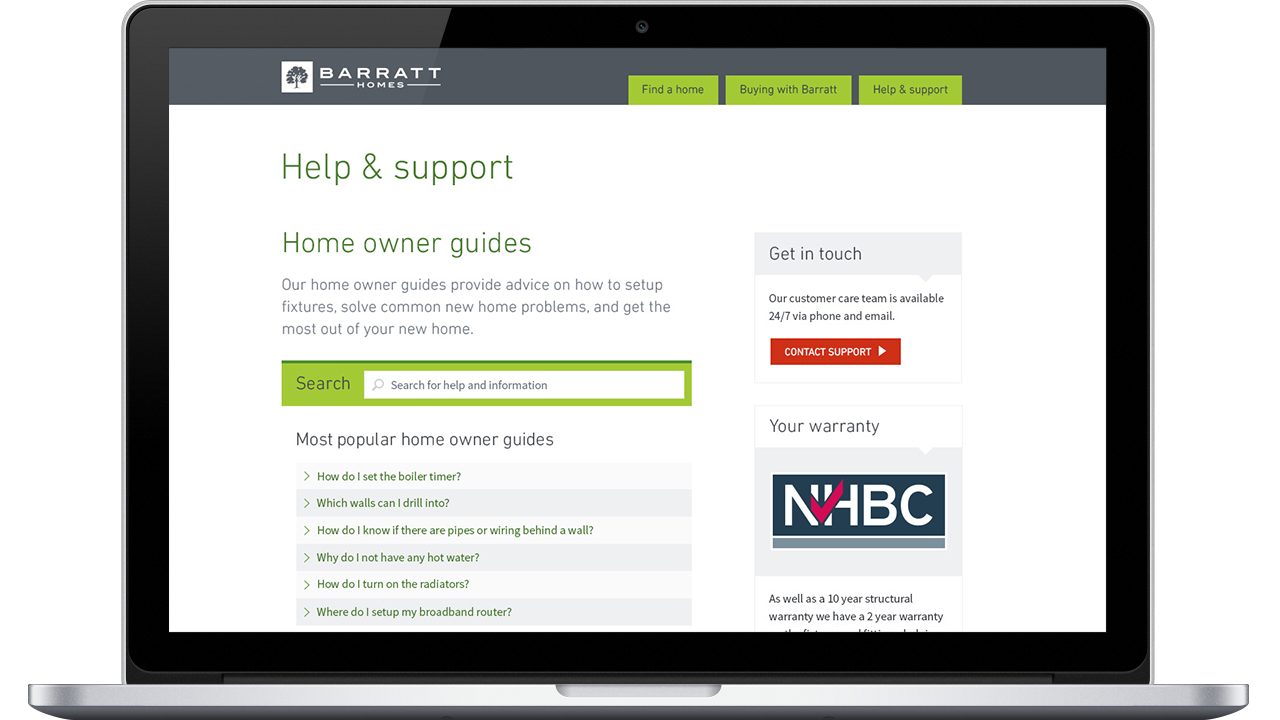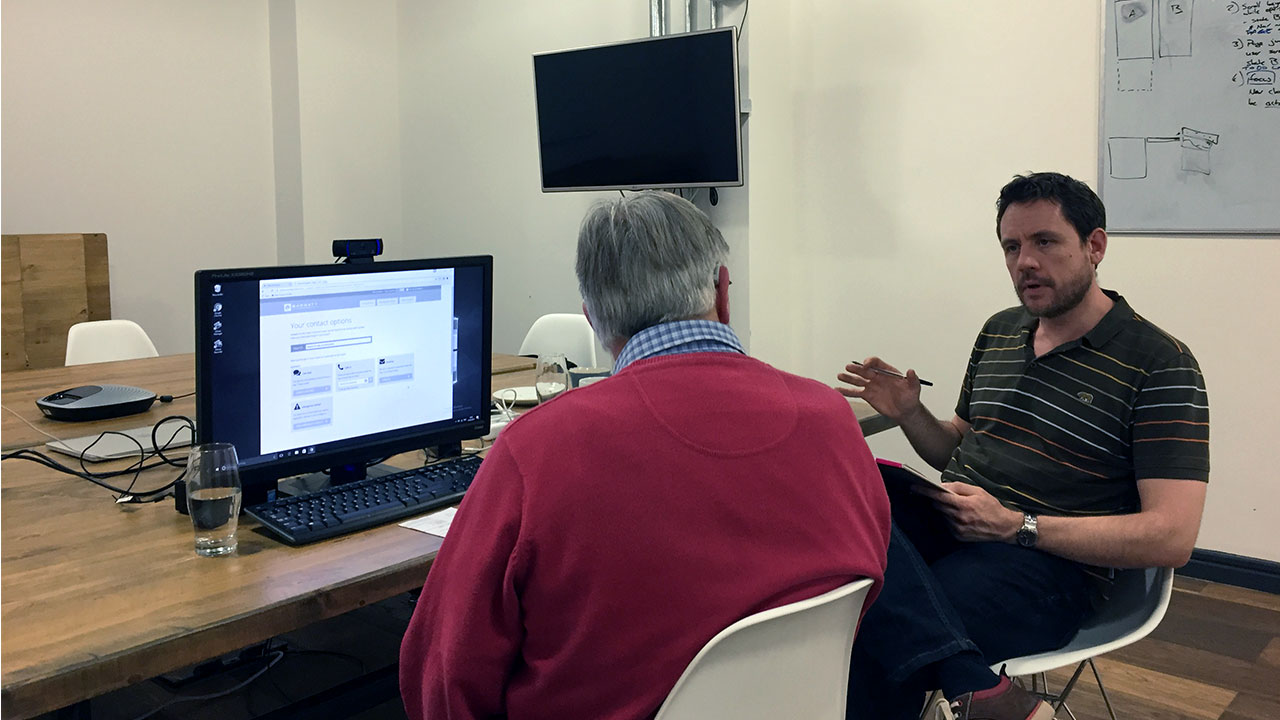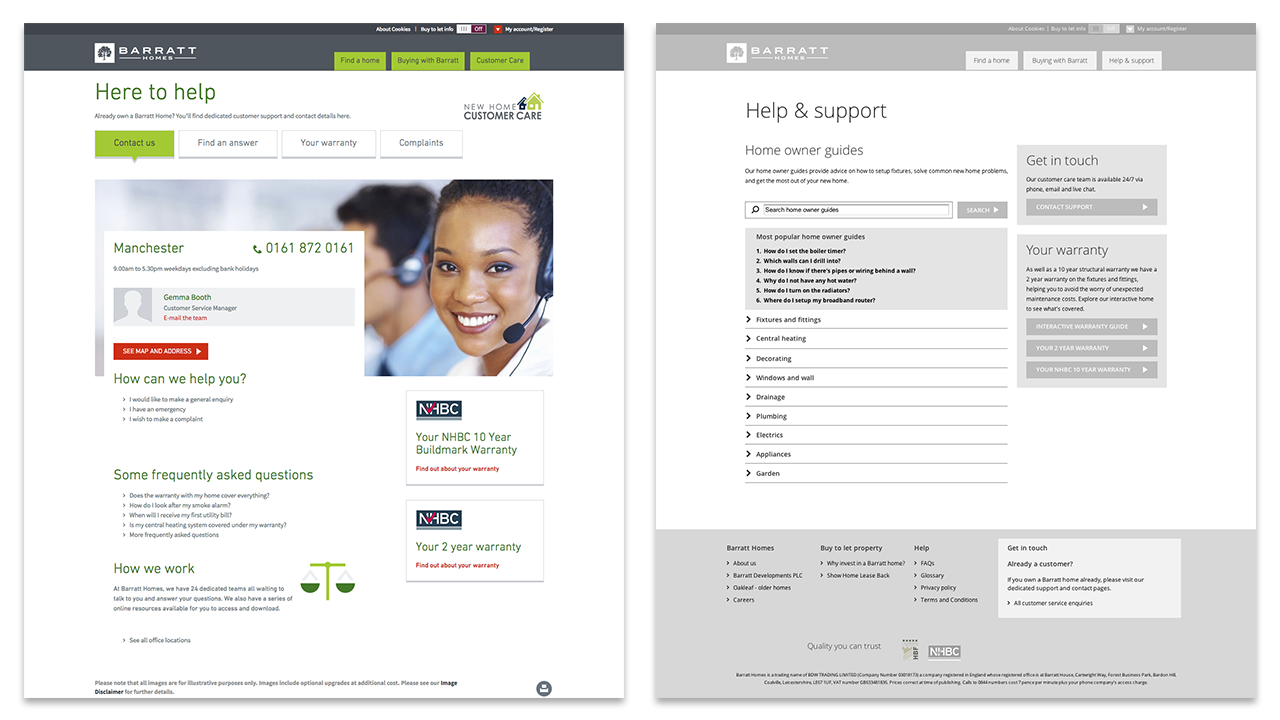Barratt Homes
Saving millions by improving the customer service experience

Background
Barratt Homes is the UK's largest property developer, and has been awarded a 5 Star Customer Satisfaction rating from the Home Builders Federation for 10 years in a row. But their award-winning customer service came at a price - costing the company tens of millions to maintain.
This enormous overhead was due to a high volume of customer queries for minor issues, and queries being directed to the wrong department or getting lost in the system. I was tasked with identifying opportunities in the existing customer journey, and designing a new journey that would reduce the number of queries while enhancing the customer experience.

Research
To identify opportunities in the customer journey, I conducted a heuristic analysis of Barratt Homes and their direct competitors’ websites, evaluating their ability to solve common queries from Barratt customers. I also conducted a similar analysis of innovative companies from different industries to see what could be learned from them.
The analysis exposed two opportunities that were deceptively simple, yet proved to be highly effective at achieving Barratt’s business objectives:
1. Providing users with the ability to self-serve common problems online will reduce the quantity of calls and emails to the customer service team.
2. Guiding users to the right solution, contact method, or department will reduce the amount of time the customer service team has to spend on each issue.
“If they're using a specific manufacturer [for fixtures and fittings], it would be nice if they provided help tips or topics on how to solve the problem yourself.”
Quote from a research participant using the prototype.
Prototyping
Based on the analysis results, I proposed a tiered selection of design recommendations that ranged from cost-effective “quick wins” to designs that demanded more time and resources. Recognising the value in the recommendations, Barratt opted for a higher tier design, which the team and I developed into a functional Axure prototype.
The prototype had two core functions: “homeowner guides” and “contact screening”. Homeowner guides provided easy-to-find answers to the most common queries, reducing the need to contact customer services. Contact screening directed users to the most relevant department and fastest contact method, as well as suggesting a related homeowner guide.

Usability Testing
To validate whether the design recommendations were worth the financial investment, we conducted usability tests with new homeowners. Each participant was asked to complete the same tasks (based on common customer queries) on the existing Barratt website and the prototype, as well as being interviewed before and after the test.
The prototype’s success rate greatly surpassed our expectations during the first round of testing. To remove any possibility of bias, we gave the existing website some unfair advantages, such as reintroducing colour (which was initially removed to be analogous to the monochrome prototype) and reordering the tasks to allow participants to become more accustomed to the existing website than the prototype.
“I can rectify my problems quicker and probably not ring them. It’s useful - they seem to have put thought into the after care. This shows that they care about people after they've bought a property.”
Quote from a research participant using the prototype.
Conclusion
Despite these advantages the existing website only achieved a success rate of 33%, while the prototype consistently outperformed with an unprecedented success rate of 100%. In addition to successfully completing all the tasks, participants positively indicated that the homeowner guides would reduce or remove their need to contact customer services.
Even by our most conservative estimates, extrapolating the test results represented a massive reduction in queries and a saving of tens of millions for Barratt Homes, while still managing to improve the customer experience. The success of this project resulted in further design, content, and development work for the agency I worked for at the time.
